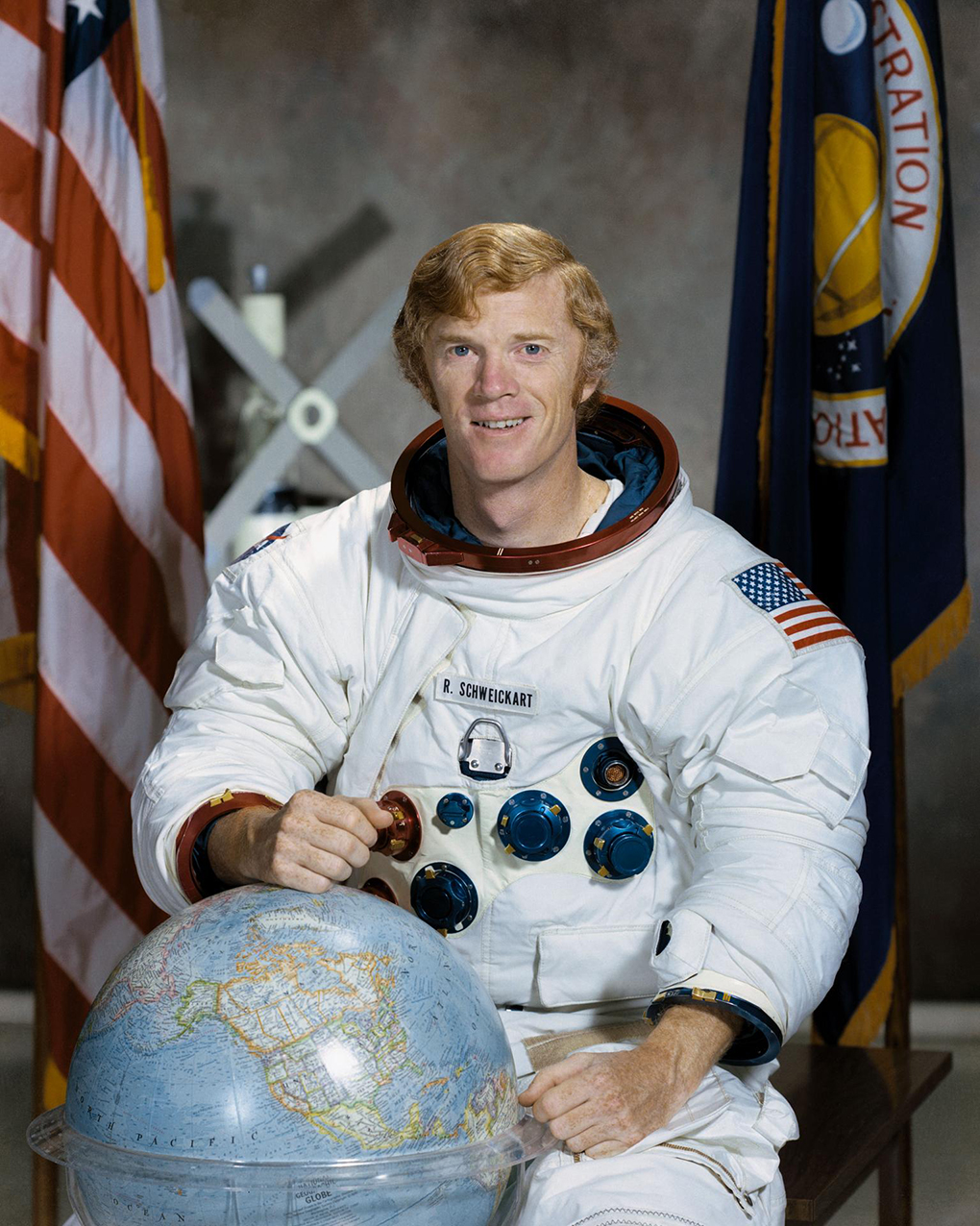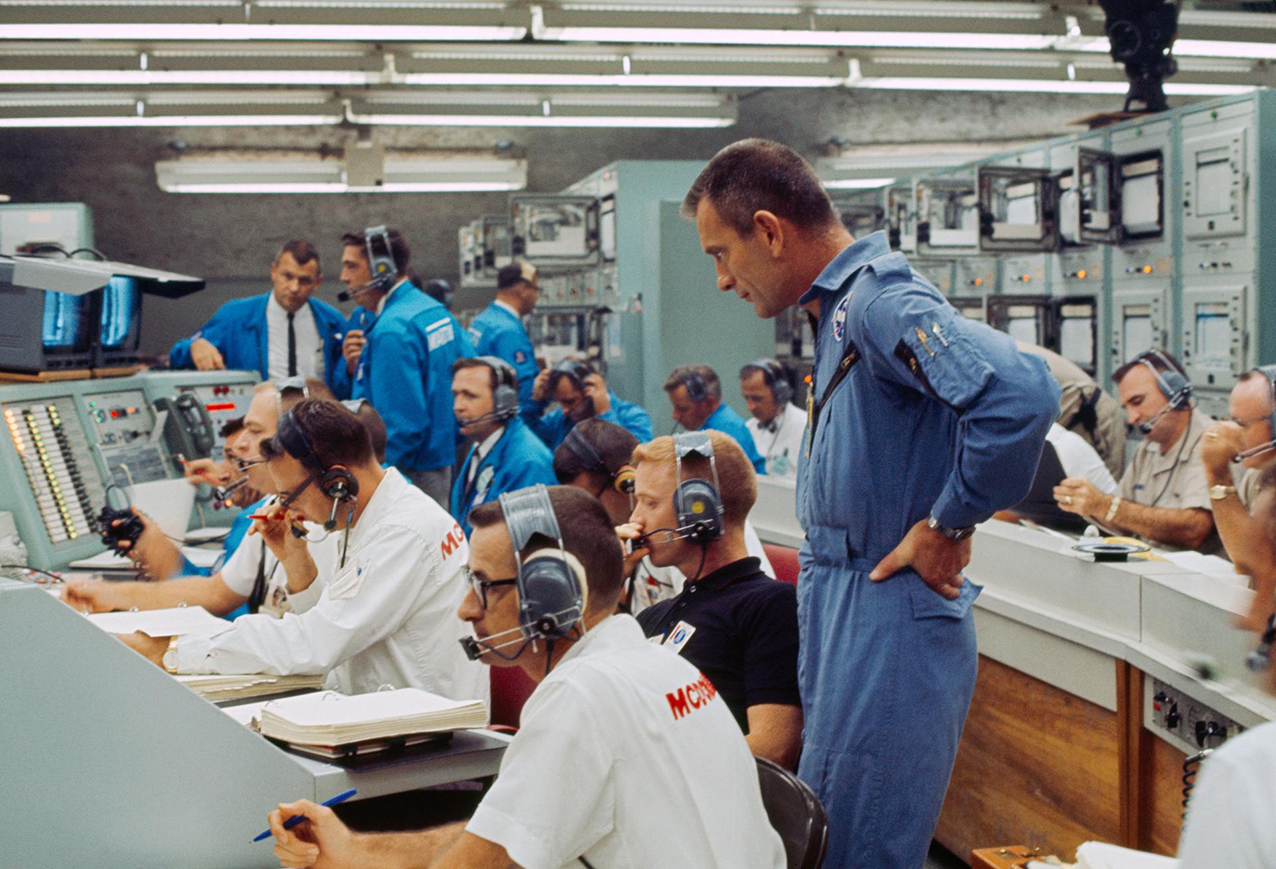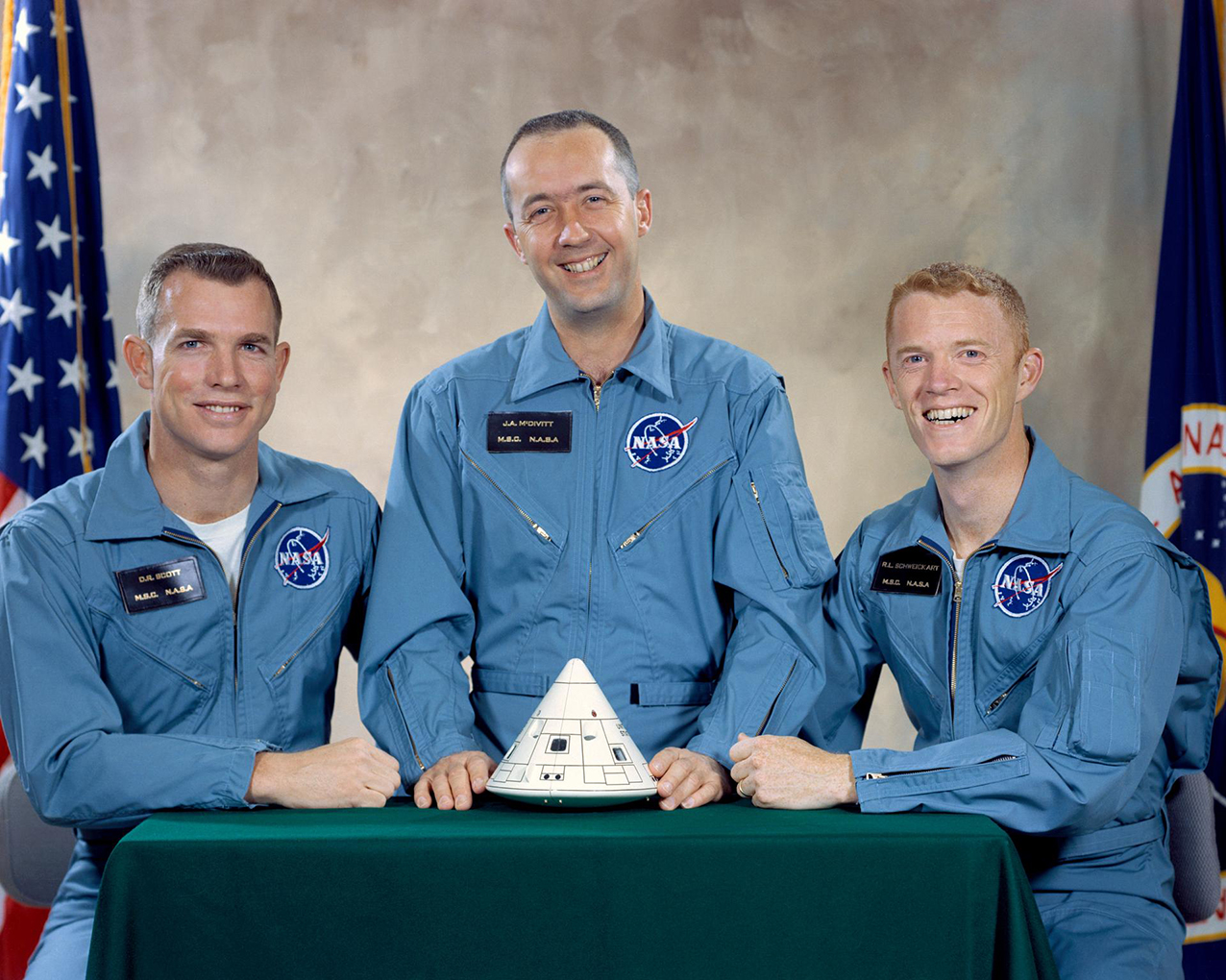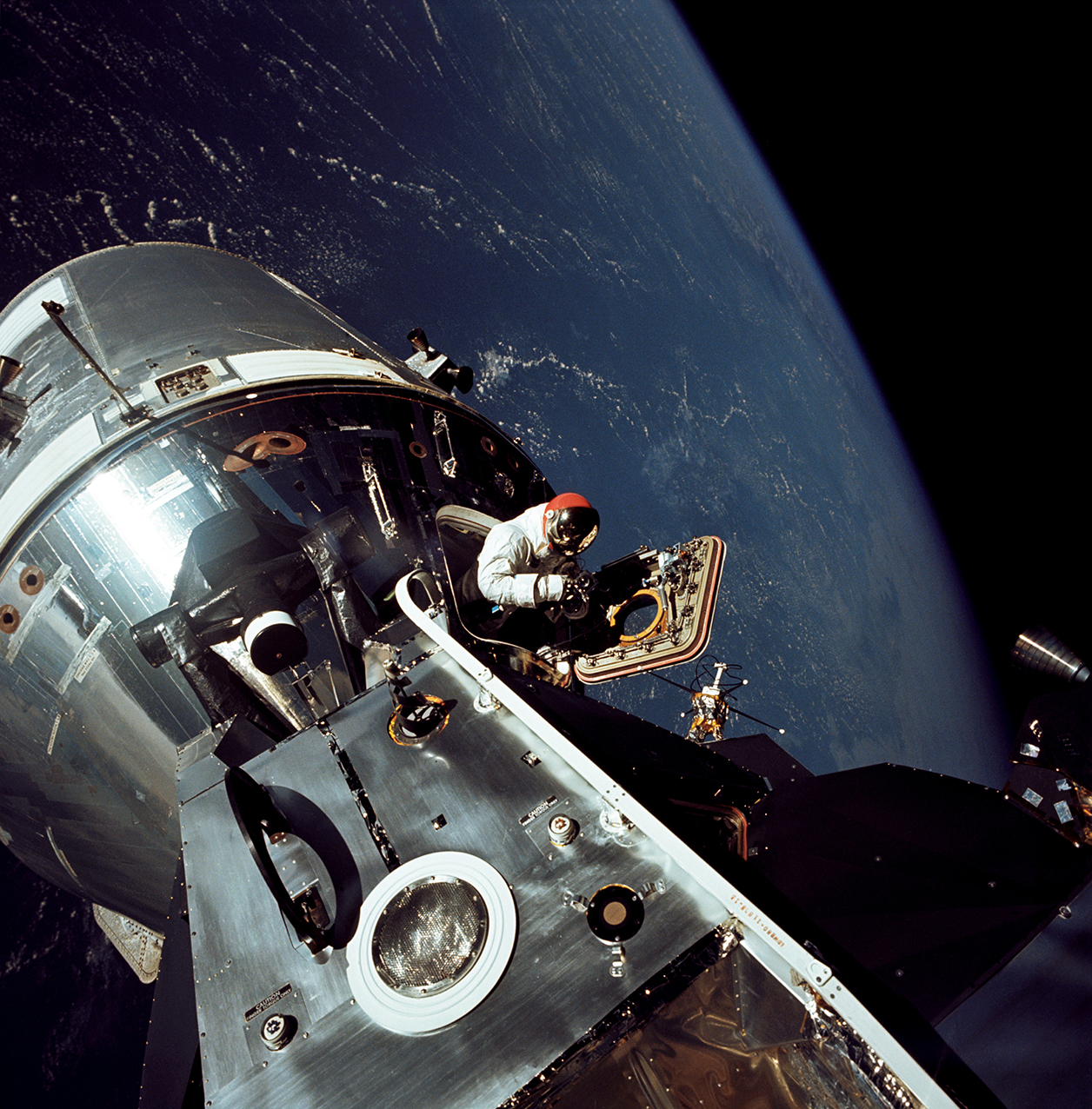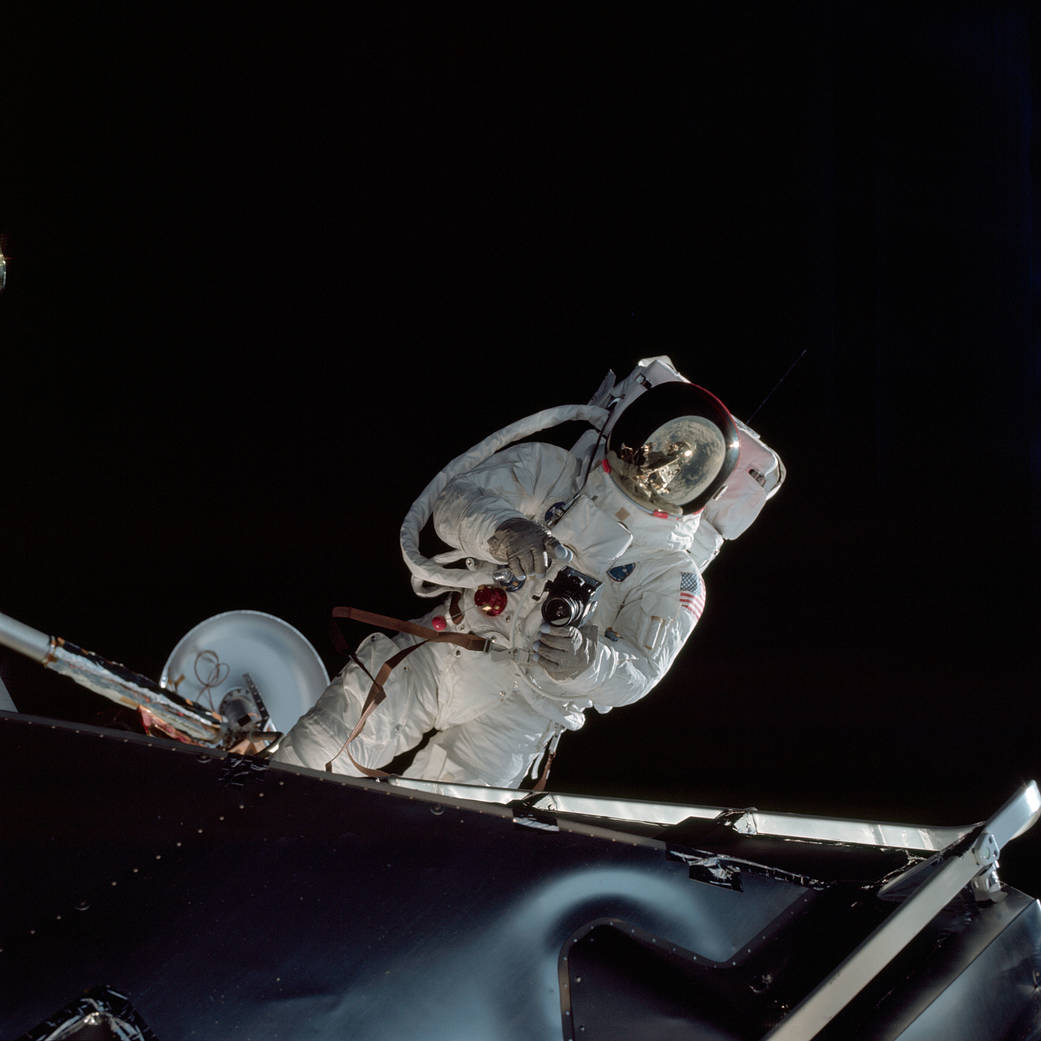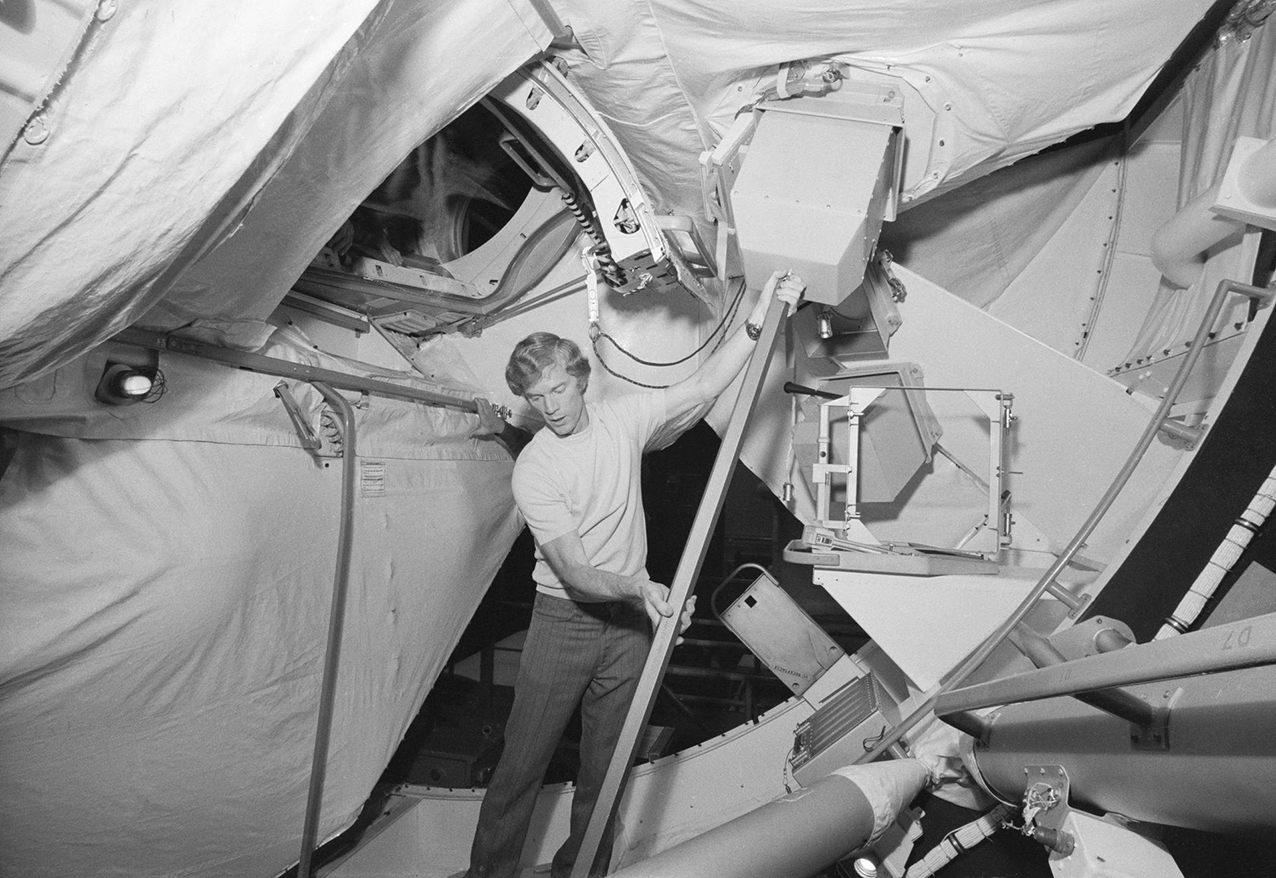


RUSTY SCHWEICKART |
|
PROFILE |
|
Full Name: |
Russell Louis SCHWEICKART Jr. |
Rank: |
Civilian |
Born: |
25 October 1935, in Neptune township, New Jersey, USA (American) |
Education: |
1952: Graduated Manasquan High School, New Jersey.
1956: BSc in Aeronautical Engineering, Massachusetts Institute of Technology (MIT), Cambridge , Massachusetts.
1963: MSc in Aeronautics and Astronautics, MIT. |
Career Highlights: |
- 1956: Attended MIT, graduating with his BSc degree in 1956.
1956-60: After graduating from MIT he entered the USAF, received pilot training and served in various units until he returned to his studies at MIT.
1960-61: Student at MIT, working towards his Master's degree.
1961-62: Returned to the USAF for one year's additional duty.
1962-63: Research Scientist, Experimental Astronomy Laboratory, MIT, where he worked on research into upper atmospheric physics, star tracking and stabilisation of stellar images; attained his MSC in 1963.
Served in the National Air Guard (101st Tactical Fighter Squadron); Captain; flew North American F-86 Sabre jets; prior to selection by NASA, he had logged over 4,000 hours flying time, including 3,500 hours in jets. |
|
|
NASA ASTRONAUT ASSIGNMENTS |
|
1963: |
(17 Oct) Named as one of 14 pilot astronauts for NASA Group 3 ("The Fourteen"); (late Dec) reported to MSC Houston for NASA assignment. |
1964: |
(Jan) Formal astronaut training programme begins; (8 Jul) assigned to the Astronaut Office (Code CB) Operations and Training Branch (headed by Neil Armstrong), where his speciality was with in-flight experiments for Gemini, Apollo and future human space flight programmes; (Jul) jungle training in Panama; (Aug) desert training in Nevada; (Nov) spent eight days in a mock-up Gemini spacecraft wired to biosensors, in a simulation of a week-long flight to evaluate orbital procedures and identify any problems; ( ) Assigned to Apollo Training Branch shortly after completing basic training. |
1965: |
(16 Feb) Reassigned to the Apollo Branch Office (headed by Dick Gordon), where his speciality was with in-flight experiments for current and future crewed programmes. |
1966: |
(21 Mar) Named as BUp PLT (LMP) for first crewed Apollo (Block I/Apollo 1), with Jim McDivitt (CDR) and Dave Scott (Senior PLT); Apollo mission training (with no LM to train on); (Nov) rescheduled manifest sees McDivitt's crew assigned as Prime crew for Apollo 2; (22 Dec) named PLT (LMP) Apollo 2; Apollo mission training (including an LM). |
1967: |
Apollo mission training (until 27 Jan); (4 Feb) assigned as an observer in the Advisory Group of the Apollo AS 204 (Apollo 1) Review Board; (20 Nov) named LMP for the second crewed Apollo; Apollo mission training. |
1968: |
Apollo mission training; (Summer) hardware delays result in an exchange of crews between the second and third Apollo missions in the launch sequence; (Aug) reassigned (with McDivitt and Scott) to Apollo 9 as LMP; Apollo mission training. |
1969: |
Apollo mission training; (27 Feb) Apollo 9 prime crew contract mild nasal infections, slightly delaying the mission's launch; (3-13 Mar) flew as LMP Apollo 9 (241 hrs 0 min); 1 EVA (46 min); first crewed test of the Apollo Lunar Module; first Apollo EVA (46 min); (Apr) assigned to the Apollo Applications Program (AAP); AAP training. |
1970: |
AAP/Skylab training; (Oct) participated in the first US-USSR training exercise when he accompanied Soviet (Soyuz 9) cosmonaut Vitaly Sevastyanov to perform a simulated EVA in the water tank at Marshall Space Flight Center (MSFC). |
1971: |
Skylab training. |
1972: |
Skylab training; (19 Jan) named as BUp CDR for Skylab 2, together with Bruce McCandless (PLT) and Story Musgrave (Science PLT); Skylab mission training. |
1973: |
Skylab mission training; (May-Jun) assisted in developing Skylab rescue procedures to deploy stuck solar array and install solar shades; (May) BUp CDR Skylab 2; (Jun-Sep) supported preparations for Skylab 3 EVA programme, especially involving the deployment of a second solar shade. |
1974: |
Skylab support issues; (1 May - Nov 1976) Director of User Affairs, Office of Applications, NASA HQ, Washington, D.C.; responsible for the transfer of NASA technology to the outside world and for working with developers of new technology in understanding the needs of NASA. |
1975: |
Director of User Affairs, Office of Applications, NASA HQ. |
1976: |
Director of User Affairs, Office of Applications, NASA HQ (until Nov); (Nov) Assistant, Payload Operations, Planning and Program Integration; Space Shuttle Office, NASA HQ, working on Shuttle payload policies. |
1977: |
Assistant, Payload Operations, Planning and Program Integration, Space Shuttle Office, NASA HQ (until summer); (Summer) took leave of absence from NASA CB to serve as Assistant to the Governor of California (Gerald G. Brown Jr.) for Science and Technology; served as liaison between the Governor's office and important new technology industries, federal agencies and aerospace companies; responsible for overseeing the State's emergency services and the National Guard programme. |
1978: |
Assistant to the Governor of California (Gerald G. Brown Jr.) for Science and Technology. |
1979: |
Assistant to the Governor of California (Gerald G. Brown Jr.) for Science and Technology (until Jul); (Jul) resigned from NASA to accept a full-time position on the California Energy Commission, which he had been appointed to in July 1970.
While in US Government service (1977-79), Schweickart technically remained a NASA astronaut, though unavailable for flight assignment. |
|
|
POST-ASTRONAUT EXPERIENCE |
|
24 Aug 1979 - 1983: |
Chairman, California Energy Commission; responsible for five commissioners and staff, overseeing power plant siting, energy supply and demand forecasts, conservation and the development of alternative energy sources. |
1983-85: |
Commissioner, California Energy Commission. |
1984-85: |
Co-founder (and past president) of the Association of Space Explorers, the international professional society of astronauts and cosmonauts. |
1987-88: |
Chair, Antarctic Safety Review Panel, National Science Foundation. |
?: |
Founding President, Courier Satellite Service Inc., a global satellite communications company which developed Low Earth Orbit (LEO) satellites designed to provide a global but affordable data service. |
?: |
Executive Vice President, CTA Commercial Service Inc.; Director of Low Earth Orbit Systems; he led the company's efforts in developing the GEMnet systems, a second-generation LEO communications satellite constellation designed to provide a regular global commercial electronic messaging service. |
?: |
President, NSR Communications. |
1996-98: |
President and CEO, ALOHA Networks Inc., San Francisco, California; a data communications company specialising in high-performance wireless internet access equipment. |
1997-98: |
Served on the US Antarctic Program Outside Review Panel. |
2002: |
Co-founder and Chairman of the Board, B612 Foundation, a non-profit foundation leading the development and testing of space flight concepts to protect Earth from future asteroid impacts. |
2010: |
Served as Co-Chairman, NASA Advisory Council Ad-Hoc Task Force on Planetary Defense. |
Currently: |
Chair Emeritus, B612 Foundation. |
|
|
Rusty SCHWEICKART Space Flight Missions |
||||||
Mission |
Vehicle |
Position |
Dates DD/MM/YY |
Duration DD:HH:MM:SS |
Orbits |
EVAs (HH:MM) |
Apollo 9 |
Saturn V |
Lunar Module Pilot |
03/03/1969 - 13/03/1969 |
10:01:00:54 |
151 |
1 (00:46) |
|
||||||
Missions Flown: |
1 |
Total Flight Time: |
10:01:00:54 |
151 |
1 (00:46) |
|
|
|
|
|
|
|
|
Space Explorer Achievements |
||||||
Performed first Apollo EVA in Earth orbit (9 March 1969, Apollo 9) Flew first crewed Lunar Module in Earth orbit (9 March 1969, Apollo 9) |
||||||
